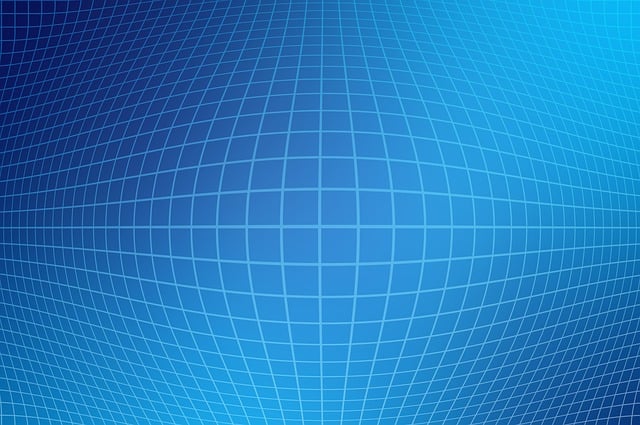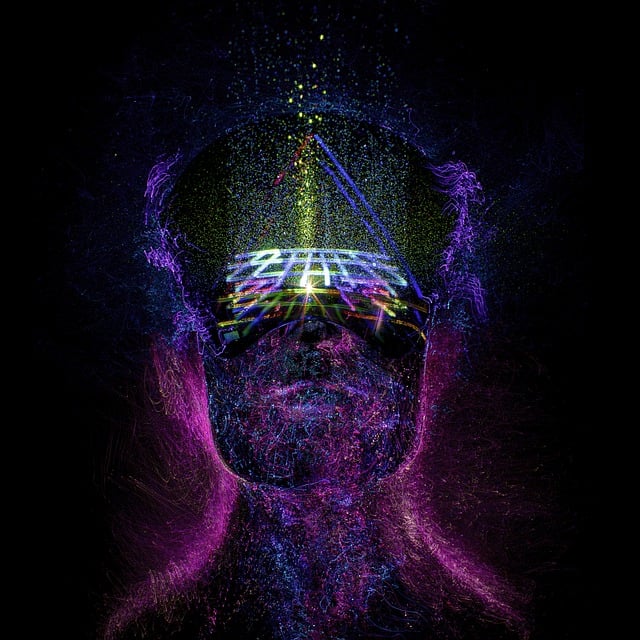The Future of Transportation: Hyperloop and Maglev Trains

Are you ready for a transportation revolution? Imagine traveling at speeds faster than ever before, reaching your destination in a fraction of the time it currently takes. Get ready to say goodbye to traffic jams and hello to a new era of transportation with the groundbreaking technologies of Hyperloop and Maglev trains.
Hyperloop, coined by Elon Musk, is a futuristic mode of transportation that uses sealed tubes to transport pods or capsules at high speeds. Picture yourself stepping into a sleek capsule and being propelled through a low-pressure environment with almost no air resistance. With speeds potentially reaching up to 700 miles per hour (1,100 kilometers per hour), your journey becomes an exhilarating experience, like soaring through the sky. This technology has the potential to transform long-distance travel, making it not only faster but also more efficient and sustainable.
Meanwhile, Maglev (magnetic levitation) trains offer another glimpse into the future of transportation. These trains use powerful magnets to lift and propel them above the tracks, eliminating friction and allowing for astonishing speeds. Without physical contact between the train and the track, Maglev trains can reach speeds of over 300 miles per hour (480 kilometers per hour). Just imagine zipping across the landscape, effortlessly gliding towards your destination in a matter of minutes.
The implications of these technological advancements extend far beyond speed and convenience. Hyperloop and Maglev trains have the potential to revolutionize our lives by reducing carbon emissions and alleviating the strain on traditional transportation infrastructures. With their remarkable energy efficiency and reliance on renewable energy sources, these transportation systems could pave the way towards a greener future.
Moreover, the development of Hyperloop and Maglev technologies opens up exciting possibilities for urban planning and connectivity. Imagine cities seamlessly connected, with reduced commuting times and increased accessibility. It’s a future where distance is no longer a barrier, enabling people to live and work in different cities while enjoying the convenience of fast and efficient transportation.
Revolutionizing Travel: Hyperloop and Maglev Trains Set to Redefine Transportation
Are you tired of spending hours stuck in traffic or enduring long-haul flights? Well, hold on to your seats because a revolution in transportation is on the horizon! The Hyperloop and Maglev trains are poised to redefine travel as we know it.
Imagine being able to travel at mind-boggling speeds, seamlessly zipping from one city to another in record time. That’s precisely what the Hyperloop promises. Developed by visionary entrepreneur Elon Musk, this futuristic concept involves a network of low-pressure tubes through which pods can travel at incredible speeds. By eliminating air resistance and friction, the Hyperloop allows for ultra-fast and efficient travel. In theory, it could transport passengers at speeds exceeding 700 miles per hour! This means that a journey that used to take hours might now be completed in mere minutes.
But the Hyperloop isn’t the only game-changer in town. Enter the Maglev train. Short for magnetic levitation, this technology relies on powerful magnets to lift and propel trains above their tracks, eliminating the need for wheels. By gliding along a magnetic field, Maglev trains can achieve astonishing speeds while providing a smooth and quiet ride. With speeds reaching up to 300 miles per hour, these trains have already been successfully implemented in countries like Japan and China, revolutionizing intercity travel.
The impact of these innovations is far-reaching. Not only will they drastically reduce travel times, but they also offer numerous environmental benefits. Both the Hyperloop and Maglev trains operate on electricity, making them significantly more sustainable than traditional modes of transportation. By minimizing reliance on fossil fuels, they contribute to a greener and cleaner future.
Moreover, these advancements have the potential to reshape urban landscapes and promote economic growth. Improved connectivity between cities will foster greater opportunities for business, tourism, and cultural exchange. Imagine living in one city and having the option to work or explore another city hundreds of miles away, all within a matter of minutes or hours. The possibilities are truly mind-bending.
The Hyperloop and Maglev trains are poised to revolutionize the way we travel. With their incredible speeds, sustainability, and transformative potential, they represent a quantum leap forward in transportation technology. Buckle up, because the future of travel has arrived, and it’s fast, efficient, and awe-inspiring.
Hyperloop vs. Maglev: Which High-Speed Technology Will Dominate the Future of Transportation?
Introduction:
Are you ready for a glimpse into transportation’s future? Picture this: traveling at incredible speeds in sleek, futuristic capsules that whisk you away to your destination, defying the limits of conventional modes of transportation. The world of high-speed technology is evolving rapidly, with two groundbreaking contenders vying for supremacy: Hyperloop and Maglev. In this article, we will dive into the details of both technologies and explore which one might emerge as the dominant force in shaping the future of transportation.

Hyperloop: Revolutionizing Speed and Efficiency
Imagine boarding a pod and being propelled through a low-pressure tube at near-supersonic speeds. That’s the essence of Hyperloop, a concept envisioned by Elon Musk. Powered by electric motors and utilizing magnetic levitation (Maglev) principles, Hyperloop promises mind-boggling speeds, reduced travel times, and unparalleled efficiency. By minimizing air resistance and employing a vacuum-like environment within the tube, it has the potential to surpass traditional modes of transport and redefine our perception of speed. But will it be the ultimate solution for the future of transportation?
Maglev: Mastering Magnetic Forces

While Hyperloop pushes boundaries with its tube-based system, Maglev trains glide gracefully on an elevated track, leveraging magnetic forces to achieve astonishing speeds. By eliminating friction between the train and the tracks, Maglev technology enables swift and smooth journeys. These trains can reach impressive velocities, all while offering a comfortable ride. With existing operational Maglev lines in countries like Japan and China, this technology has already proven its capabilities. However, will it outshine the innovative prowess of the Hyperloop?
Conclusion:
As the race to transform transportation heats up, the battle between Hyperloop and Maglev intensifies. Both offer tremendous advantages over traditional modes of travel, promising shorter travel times, enhanced efficiency, and a glimpse into a future where speed knows no bounds. While Hyperloop aims to revolutionize the way we move with its futuristic tube-based system, Maglev trains have already established their presence and prowess in certain regions. The question remains: which high-speed technology will dominate the future of transportation? Only time will tell whether Hyperloop’s audacious vision or Maglev’s proven track record will stand as the ultimate victor in this thrilling contest.
Breaking Barriers: How Hyperloop and Maglev Trains Are Defying Traditional Modes of Travel


Imagine a world where commuting between cities is not just a mundane necessity but an exhilarating experience. Thanks to groundbreaking technologies like Hyperloop and Maglev trains, this futuristic vision is closer to reality than ever before. These innovative transportation systems are revolutionizing the way we travel, defying traditional modes of transportation and opening up a new realm of possibilities.
Hyperloop, often touted as the “fifth mode of transportation,” is a cutting-edge concept proposed by Elon Musk. It involves high-speed pods traveling through low-pressure tubes at incredible speeds, virtually eliminating air resistance and friction. With speeds potentially reaching over 700 miles per hour, it promises to shorten travel times significantly. Imagine zipping from one city to another in the blink of an eye, with the journey feeling more like a thrilling adventure than a tedious commute.

On the other hand, Maglev trains are already a reality in some parts of the world. Unlike conventional trains that rely on wheels and tracks, Maglev trains use magnetic levitation technology to hover above the rails, reducing friction and allowing for smoother, faster rides. These trains can achieve mind-boggling speeds, surpassing 300 miles per hour. Passengers aboard Maglev trains experience a sensation akin to gliding through the air, completely oblivious to bumps or curves on the tracks.
The impact of Hyperloop and Maglev trains extends far beyond mere speed. These transportation systems hold the potential to transform entire regions, bridging gaps between cities and fostering economic growth. They can connect urban centers and remote areas, making commuting easier, faster, and more efficient. Imagine living in a small town but having the convenience of working in a bustling metropolis, all made possible by these innovative modes of travel.
Moreover, Hyperloop and Maglev trains are environmentally friendly alternatives to traditional modes of transportation. By using clean energy sources and emitting little to no greenhouse gases, they contribute towards a greener future. Reducing reliance on fossil fuels and lowering carbon footprints, these technologies pave the way for sustainable transportation solutions in an era where environmental concerns are paramount.
Hyperloop and Maglev trains are revolutionizing the way we travel, defying the limitations of traditional transportation systems. With their unprecedented speed, efficiency, and potential for economic growth, they offer a glimpse into a future where commuting becomes an awe-inspiring adventure. As these technologies continue to evolve and gain traction worldwide, the barriers that once constrained our journeys are being shattered, making way for a new era in transportation.
From Concept to Reality: The Promising Future of Hyperloop and Maglev Trains
Did you ever dream of traveling at incredible speeds, zooming through tubes or levitating above tracks? The future of transportation is here, and it comes in the form of Hyperloop and Maglev trains. These revolutionary technologies are set to redefine how we travel, offering unprecedented speed, efficiency, and sustainability. Let’s delve into the details and explore the exciting possibilities they hold.
Imagine boarding a train that reaches speeds up to 700 miles per hour, propelling you from one city to another in the blink of an eye. That’s the promise of Hyperloop, a concept envisioned by Elon Musk. This futuristic transportation system consists of passenger pods that zip through low-pressure tubes, reducing air resistance and allowing for mind-boggling speeds. Hyperloop has the potential to revolutionize both long-distance and urban commuting, offering a greener alternative to traditional modes of transport.
But what about Maglev trains? Maglev, short for magnetic levitation, takes the train experience to a whole new level. With this technology, trains float above tracks using powerful magnets, eliminating friction and enabling incredibly smooth rides. Maglev trains are already operational in some countries, but ongoing research and development aim to enhance their capabilities further. Imagine gliding effortlessly at high speeds, free from noise, vibrations, and the constraints of conventional rail systems.
These innovative transportation solutions offer a myriad of benefits. First and foremost, they significantly reduce travel times, effectively shrinking distances between cities. Commutes that used to take hours can now be completed in mere minutes, opening up a world of opportunities for work, leisure, and quality time with loved ones. Moreover, the inherent energy efficiency of these systems reduces carbon emissions, contributing to a greener and more sustainable future.
The implementation of Hyperloop and Maglev trains isn’t without challenges, though. Building the necessary infrastructure and securing investments pose significant hurdles. However, numerous companies and governments worldwide have already recognized their immense potential and are actively working towards realizing these projects. With ongoing advancements, it’s only a matter of time before Hyperloop and Maglev become integral parts of our transportation networks.
The future of transportation is rapidly evolving, and Hyperloop and Maglev trains are at the forefront of this revolution. These groundbreaking technologies hold immense promise in terms of speed, efficiency, and sustainability. As we progress from concept to reality, we can look forward to a future where commuting becomes seamless, distances shrink, and the world becomes more connected than ever before. Get ready to strap in and experience the awe-inspiring journey that awaits us all.




